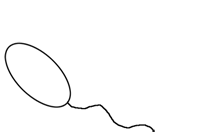Team:Chiba
From 2010.igem.org
(Difference between revisions)
| Line 25: | Line 25: | ||
/*- Menu Tabs E--------------------------- */ | /*- Menu Tabs E--------------------------- */ | ||
| - | #tabsE { | + | #top-section { |
| + | height: 0px; | ||
| + | margin-top: 0px; | ||
| + | margin-left: auto; | ||
| + | margin-right: auto; | ||
| + | margin-bottom: 0 !important; | ||
| + | margin-bottom: 0px; | ||
| + | padding:0; | ||
| + | border: 1; | ||
| + | } | ||
| + | |||
| + | |||
| + | #tabsE { | ||
float:left; | float:left; | ||
width:100%; | width:100%; | ||
| Line 114: | Line 126: | ||
<body> | <body> | ||
| + | |||
| + | <div class="center"><div class="floatnone"><span> | ||
| + | <a href="https://static.igem.org/mediawiki/2010/5/59/Chiba_bar2.jpg" class="image" title="Banner"><img alt="Banner" src="https://static.igem.org/mediawiki/2010/5/59/Chiba_bar2.jpg" border="0" /></a></span></div> | ||
| + | |||
| + | |||
| + | |||
| + | |||
<div id="tabsE"> | <div id="tabsE"> | ||
<ul> | <ul> | ||
| Line 153: | Line 172: | ||
</ul> | </ul> | ||
</div> | </div> | ||
| - | |||
| - | |||
</body> | </body> | ||
Revision as of 18:16, 23 October 2010


|
 |
 "
"

